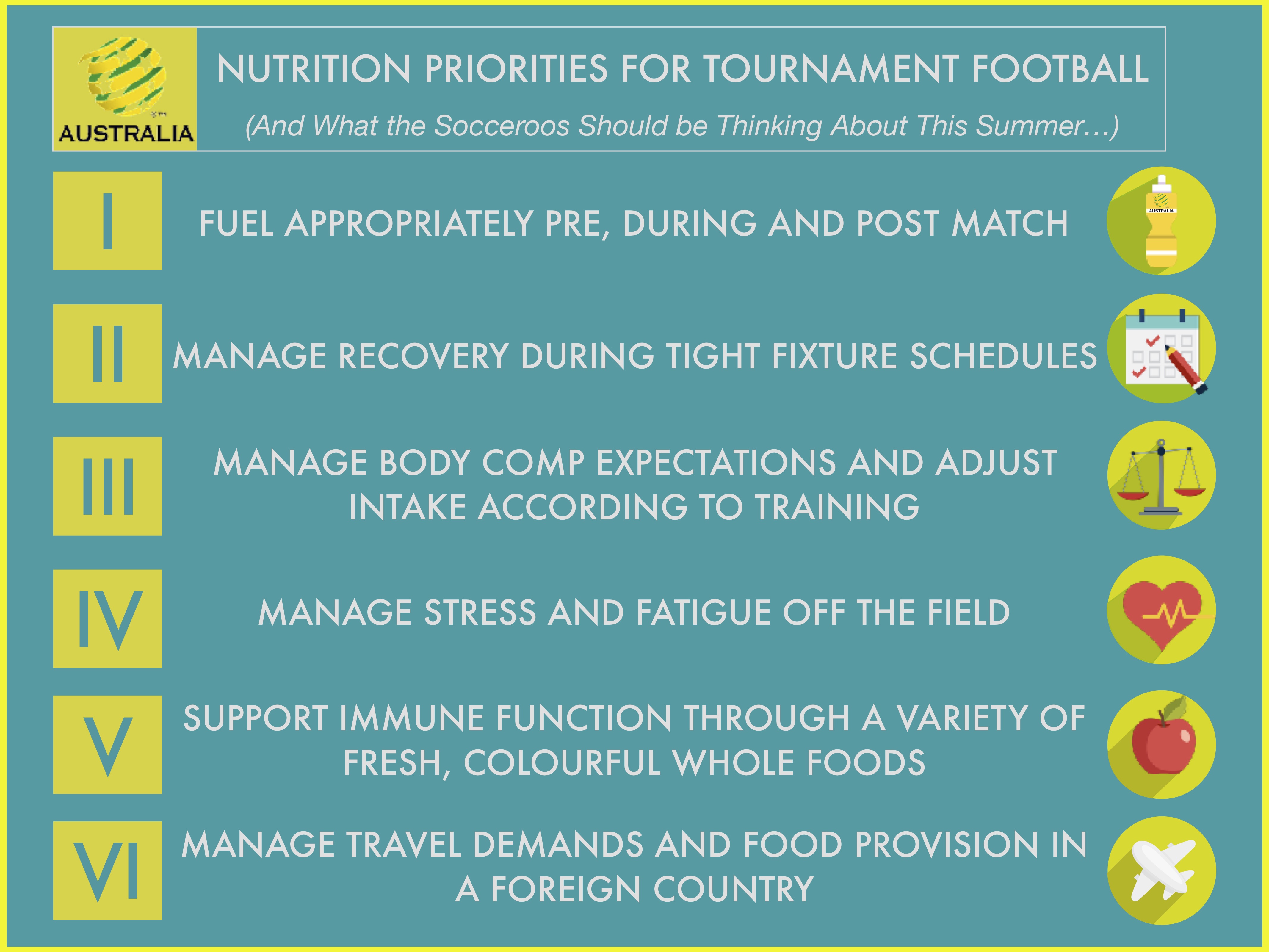Nutrition Priorities in Tournament Football
Here it is... the biggest sporting event in the world!
With the FIFA World Cup so close, it’s only natural that we talk about the importance of nutrition within tournaments settings. Back to back competition games within a short time-frame can often detract from the focus placed on recovery.
With Nutrition being such a big factor in how an athlete responds to competition or training, let’s dive into some effective strategies that can improve chances on the field.
The three nutritional priorities for athletes in major tournaments (no matter what level) are:
- Fuelling to perform and allowing the body to recover immediately following a game;
- Ensuring player’s body composition is optimised;
- Maintaining immune function to avoid players falling ill.
Appropriate Fuelling Pre-Match
As discussed in our blog on Event Fuelling (part 2), team-based sports involve intermittent bursts of high-intensity activity with no predictable pattern or path. The distance run, number of sprints, changes of direction, jumps and technical actions are all dependent on so many factors – many more than we can list in this short blog post.
Therefore, there is never going to be a one-size-fits-all approach to team sports nutrition. Every athlete is going to require individual attention to get it right.
This isn’t to say there aren’t any hard and fast rules that apply to most situations – High-intensity Intermittent sports, like football, inevitably lead to a steady depletion of muscle glycogen (your muscle carbohydrate stores). This is the main source of fuel for extremely explosive actions.
This is why it’s important that an athlete begins a competitive game with a full tank.
This can be achieved by prioritising higher carbohydrate foods on the day before, and the day of the game. Particularly in tournaments like the World Cup, where the window to refuel is limited, a greater focus should be placed on higher carbohydrate foods. However, there is no need to go overboard with this either – training is going to be tapered around these games, so simply eating meals that are higher in carbohydrates will provide the players with the necessary nutrients. Once the glycogen is stored, it will stay there as long as training remains at a relatively low intensity (as is the case in the days surrounding games).
So, what does this mean for recovery?
The Socceroos will be playing three competitive fixtures in the space of 11 days, so recovery is crucial.
In most cases, when games or matches are separated by multiple days, there is no urgency in restoring muscle glycogen stores. However, during tournaments, the replenishment of these stores is largely going to dictate how well the athlete can recover. By feeding the muscle carbohydrates immediately following exercise, we are re-filling the fuel tank and giving it “permission” to begin healing. This is why the inclusion of carbohydrates with your protein portion after competition games is particularly important during congested schedules.
Ensuring Player’s Body Compositions are Optimised
This topic could easily be a whole blog post in itself – and i must stress before going on that there should be very little focus placed on making body composition changes during important tournaments (or any competition period for that matter!). The nutritional priority should instead be placed upon ensuring the athlete is able to perform at their best.
With a footballer often requiring upwards of 13000 kJ + per day to fuel their efforts, it can be very easy to consume needless calories through the belief that this will improve their performance. Eating too much may be as counterproductive as not eating enough, and in my experience, footballers (or anyone for that matter!) rarely want to play feeling heavy and bloated.
So how do you keep the body composition of an athlete in check when they have access to an endless supply of food? Within tournaments the access to optimum food is not always there – and complicate this with competition and travel, how can we fuel to perform?
This is where adapting the intake of food to meet training demands becomes essential.
Lower training days will place more focus upon variety, colour, proteins and fats, while heavier training days (or days leading into competition) will be all about carbohydrates, quality proteins and optimising recovery.
Maintaining Immune Function
The last thing a coach wants is an athlete to be ruled out because of a preventable illness.
The trick to maintaining immune function is to have a large variety of nutrient-dense foods including fruit, vegetables, beans, whole grains, meats and dairy. Athletes are encouraged to consume a variety of colours as these offer the perfect range of vitamins and minerals.
Tournaments hosted in foreign countries can often make sourcing these foods a challenge. Many countries also carry their own unique food safety risks which should be managed prior to travelling. This is why preparation is key. Getting to know the location beforehand and finding out what food is on offer are important first steps. If still unsure, seek the advice of a sports dietitian who has an understanding of travel nutrition.
Regardless of where the tournament is held, considering the inclusion of probiotics from a couple of weeks out might be a good idea. Ensuring that food is prepared and stored appropriately will also reduce the risk of these concerns.

Remember, every athlete is different and there is no single diet that meets the needs of all athletes, all the time.
In tournament settings, the priority should solely be on the performance and well-being of the squad. Having these strategies in place from the beginning will remove a major stressor from competition.

ALICIA EDGE HEAD SPORTS DIETITIAN
Alicia is the head Advanced Sports Dietitian at Compeat Nutrition. She is also a mum and triathlete, so advice extends beyond the basics and is instead focused on providing effective and achievable nutrition for both training and racing.